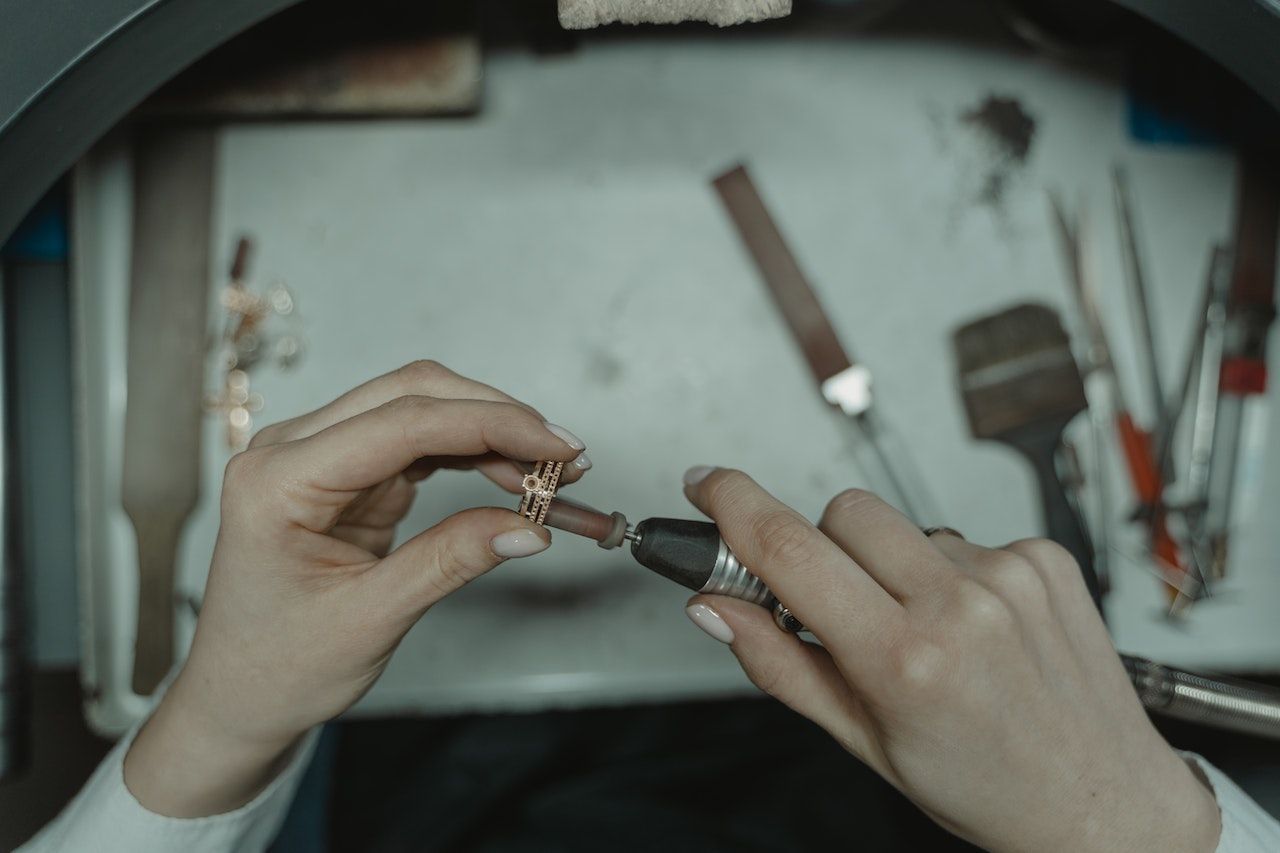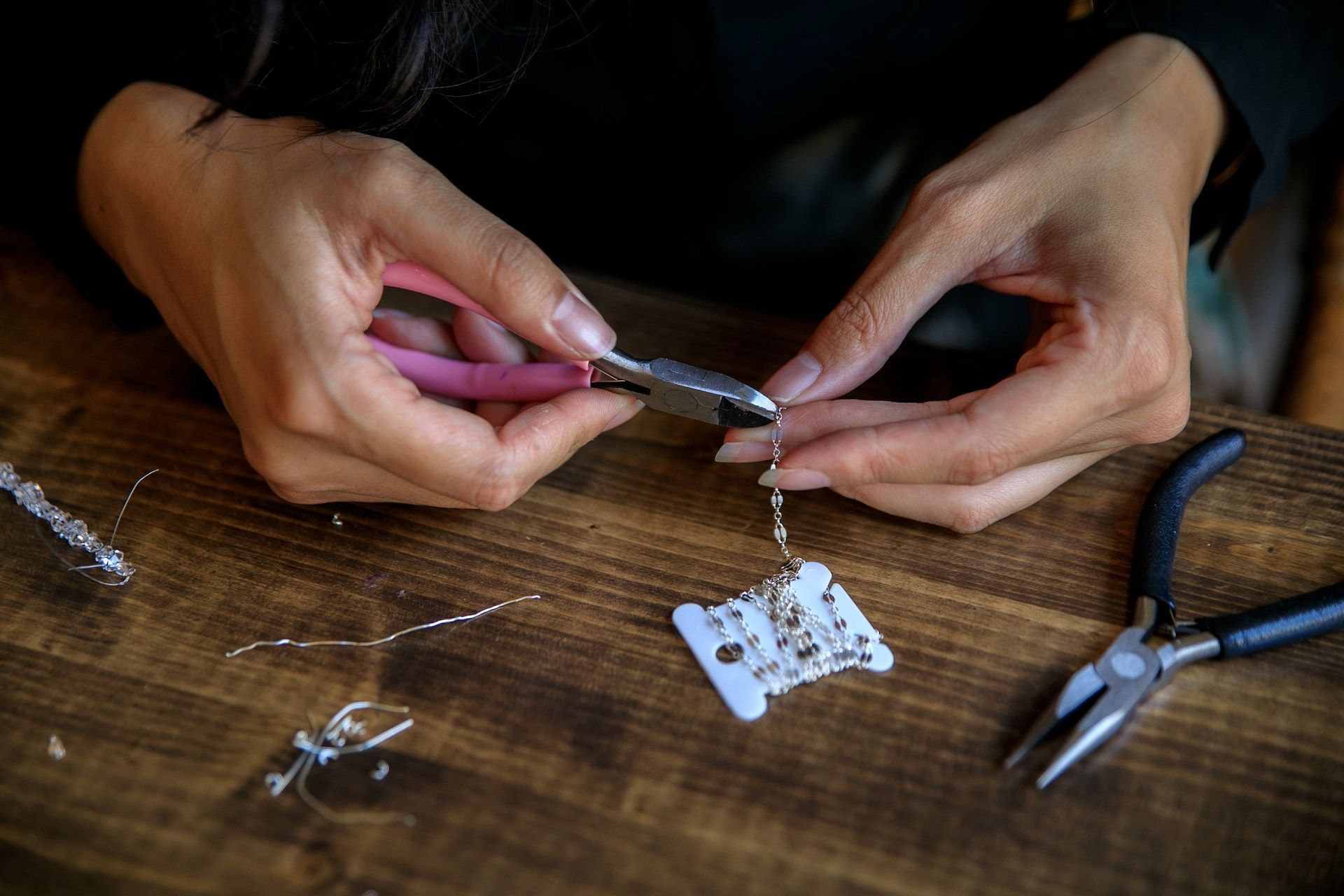Efficient Repair Management from Acceptance to Pick up
Jewelers are known for their craftsmanship and delivering beautiful, precious jewelry to their customers. But as with any craft profession, problems can arise, and one of the most common challenges for jewelers is repair management.
Customers often come to jewelers wanting to repair or customize their jewelry. Managing these repairs in an efficient and streamlined manner is critical to maintaining satisfied customers and optimizing operations.
The complete repair process explained
Do you want to start processing repairs? In this blog post we will discuss the benefits of efficient repair management and how the PrismaNote system can help streamline the process from accepting a repair to customer collection.
Acceptance of the repair
One of the most important steps in efficient repair management for jewelers is the process of accepting repairs in the store. This is the moment when the customer hands over his or her precious piece of jewelry to the jeweler for repair. The
jeweler system makes this step simple, streamlined and customer-friendly.
Step 1: Customer Interaction
The process begins when a customer approaches the jeweler with a repair request. This can range from simple repairs such as replacing a battery to complex restorations of antique jewelry. The PrismaNote system offers several ways in which the customer can submit the request.
Usually the customer comes to the store and discusses the repair request with an employee of the jewelry store. This can happen at the counter or in a specially equipped room for private consultations.
It is also possible to give consumers the opportunity to submit their repair online via a form. Here they can provide details, upload photos and leave specific instructions. In addition, customers can also contact the jeweler by telephone to discuss their repair request. Employees of the jeweler can record the necessary information and register the request in the system.
Step 2: Registration in a system
Regardless of how the repair request is submitted, it is then registered in a repair system. This is a crucial step to ensure that all information is recorded accurately and that the repair process is managed correctly. During registration, the following data is recorded:
Customer information: The name, contact details and any specific customer preferences are recorded.
Jewelry information: A detailed description of the jewelry, including the type, material, weight and any gemstones present.
Repair description: The nature of the repair is accurately recorded, together with any specific instructions from the customer.
Estimated Cost and Lead Time: Write down (an estimate of) the costs and expected lead time based on the information entered.
Step 3: Repair Order and Storage
After all necessary information has been recorded, a unique repair order is generated by the system. This command contains all relevant data and is used to track the repair throughout the process. Now comes the aspect of storing the jewelry.
Many jewelry stores use special repair bags to keep jewelry safe. Each bag is assigned a unique number, which is noted on the repair order and attached to the bag. This number is ascending and serves as an identification tool to easily find the repair in the store. The customer also receives a receipt with this number. This is useful when picking up.
Step 4: Payment options and further contact
When accepting the repair, there are several options regarding payment and further steps:
- Immediate Payment: The customer may choose to pay the estimated cost of the repair immediately. In this case, the payment can be processed and the repair can be scheduled.
- Pay Later: Some customers prefer to pay only after the repair is complete and they are satisfied with the results. The repair system can support this option and record the payment details for later use.
- Further Assessment: In some cases, the jeweler may contact the customer after the jewelry has been thoroughly inspected. This can happen if unexpected complications are discovered that could affect the cost or turnaround time of the repair. The customer will be notified and further steps will be discussed before proceeding with the repair. There is a separate status in the system to determine this workflow.
Through this structured and automated process for accepting in-store repairs, the right software ensures accurate registration, secure jewelry storage and flexible payment options. This leads to higher customer satisfaction and more efficient business operations for jewelers. It is a powerful tool that lays the foundation for a successful repair management process from start to finish.
Tips for processing a repair
Now that the repairs have been accepted and recorded, it is essential to process them efficiently. Our system offers different statuses that can be assigned to each repair, which helps to maintain an overview and streamline the repair process. Here are some tips for jewelers on how to best handle repairs using the repair system:
1. Use Statuses Effectively
PrismaNote offers several statuses that can be assigned to repairs, such as "Pending", "Waiting for Parts", "Completed" and more. Use these statuses effectively to track the progress of each repair. Start setting the correct status when the repair comes in, and update it regularly as the repair progresses. This way, everyone in the organization always knows the status of the repair.
2. Keep communication open
The repair system also offers the option to add comments and notes to each repair. Use this feature to keep track of important information about the repair. If unexpected complications arise during the repair process, such as damage that is only visible after disassembly, ensure that this information is documented and shared with the relevant personnel.
3. Customer notifications
Keep your customers informed about the progress of their repairs. PrismaNote can automatically generate and send customer notifications, such as confirmations of receipt, updates on the status of the repair and reminders to collect the repaired jewelry. This promotes customer satisfaction and reduces misunderstandings.
4. Efficient Workflow
Create an efficient workflow in your store. Make sure your staff is aware of the statuses of the repairs and that they know what actions to take based on those statuses. This helps prioritize repairs and maximize productivity.
Steps to complete repair and customer pick-up
Completing a repair and handing over the repaired jewelry to the customer is a crucial phase in the repair management process for jewelers. It is the moment when customer satisfaction, quality control and professional behavior of the staff are central.
Please inform that the repair can be collected
Update the repair order in the repair system with the status "Completed" and add any comments or notes about the repair performed and the quality control. This serves as an important document for both the customer and the store. The customer can now also be easily informed by email, telephone or WhatsApp that the repair can be picked up.
Demonstration and Explanation
When handing over the repaired jewelry to the customer, take the time to explain any changes or repairs. For example, show the customer how a repaired closure works or explain which parts have been replaced. This gives the customer confidence and appreciation for your craftsmanship.
Billing and Payment
When collecting the repair, only the repair needs to be scanned in the cash register. The outstanding amount will then appear for you to pay. The customer then automatically receives a receipt or the status is automatically changed to 'Delivered'.

The importance of efficient repair management
Efficient repair management is therefore not only a matter of convenience, but it also impacts overall customer satisfaction, business efficiency and profitability. Here are some reasons why efficient repair management is vital for jewelers:
1. Customer satisfaction
Customers who leave their precious jewelry at a jeweler for repair often do so with a degree of concern. They trust that the jeweler will handle their belongings with care and that the repair will be carried out on time and to their satisfaction. An efficient repair management system can contribute to customer confidence by providing transparency, communication and speed.
2. Time saving
A jeweler can waste a lot of time searching for repair orders, manually maintaining paper documentation, and going through various steps in the repair process. An automated system can automate many of these time-consuming tasks, freeing up staff to focus on the actual repairs.
3. Improved Business Efficiency
Efficient repair management contributes to better business efficiency. By streamlining the process, jewelers can handle more repairs in the same time frame, increasing revenue without compromising the quality of work.
4. Cost control
Controlling costs is essential to the success of any business. An efficient repair management system can help identify bottlenecks and reduce waste, which can result in lower operational costs.

Best repair software
Our retail software offers an advanced repair management system designed specifically for jewelers. It provides an all-in-one solution for managing repairs from point of hire to customer pick-up. Here are the key features and benefits of the PrismaNote system:
1. Intuitive Assumption of Repair Requests
The system starts with a simple and intuitive way to take repair requests. Customers can come to the store in person to discuss their repair, or they can do this online through an easy-to-use portal. The system uses digital forms and images to record the details of the repair, such as the type of jewelry, the nature of the repair and any specific instructions from the customer.
2. Efficient Order Registration and Tracking
Once hired, the PrismaNote system automatically generates a unique repair order for each customer. This order contains all relevant information, including a description of the repair, estimated costs and expected collection date. This information is useful not only for the jeweler, but also for the customer, who can monitor the progress of the repair via the online portal.
3. Workflow Management
One of the most powerful features of the PrismaNote system is workflow management. The system provides a visual representation of all ongoing repairs and where they are in the process. This allows staff to easily monitor progress and identify any delays or bottlenecks. The system automatically sends notifications to the appropriate employees when action is required, such as ordering specific parts or notifying the customer of the completed repair.
4. Automated Communication
An important aspect of customer satisfaction is communication. The PrismaNote system automates communication with customers throughout the repair process. Customers receive notifications and updates via email or text message, such as confirmation of receipt of their jewelry, reminders for collection appointments and notifications when the repair is complete. This keeps the customer informed and reduces the chance of misunderstandings.
5. Inventory Management and Supplier Integration
Efficient repair management also includes the management of required materials and parts. The PrismaNote system integrates with suppliers and inventory management systems so jewelers can easily see which parts are available and which need to be ordered. This prevents delays due to missing parts and ensures a smooth repair
Deel deze post:
Was deze informatie waardevol?
Laat je inspireren met gratis tips en ideeën voor het digitaliseren van de winkel.
Meld je aan voor de nieuwsbrief en ontvang de laatste tips & tricks.
PS: wij houden ook niet van spam en u kan zich altijd eenvoudig uitschrijven.
